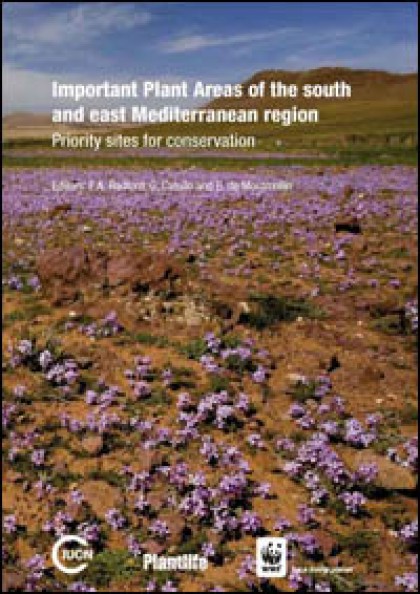
July 2011
 | July 2011 |
Natural riches of North Africa and the Middle East | |
|---|---|
 An international conservation project has brought together botanists and scientists from the Middle East and North Africa - Algeria, Egypt, Israel, Jordan, Lebanon, Libya, Morocco, Occupied Palestinian Territories, Syria and Tunisia - in an unprecedented bid to secure the future of the region´s wildlife. A new report published on 1 June by IUCN, Plantlife and WWF - Important Plant Areas of the south and east Mediterranean region: Priority sites for conservation - shows that there are more than 200 internationally significant areas for wild plants in the region, rivalling those found elsewhere in Europe and Asia for species richness, and supporting an extraordinary range of wildlife. In many of these countries, these species-rich landscapes also provide vital resources for local livelihoods. A total of 207 Important Plant Areas (IPAs) are listed in the report for the first time, including 33 in Syria, 20 in Lebanon, 20 in Egypt, 21 in Algeria, 13 in Tunisia and five in Libya, with teams from 11 countries around the south and east Mediterranean involved in the partnership project, meeting to discuss results and work together to carry out a rapid assessment of wild plants and wildlife-rich areas across the region. Seventy-five percent of the 207 IPAs contain locally endemic species - species that grow only in one country or area. ‘Mega endemic sites’ (containing more than 20 species restricted to small geographical areas) were identified in Algeria, Morocco, Lebanon, Syria and Libya, meaning that they are extraordinarily rich in their diversity of wild flowers and other plants. The report is the result of unprecedented cooperation between botanists and scientists from participating countries. The data collated fills gaps in the knowledge available about the Mediterranean’s important areas for wild plants and their habitats including forests, and can serve as a tool for governments and regional conventions to focus conservation work on priority areas for conservation. Many of these countries are in the midst of political instability and conflict, but in the long term, natural resources and wildlife areas will continue to be vital for the health, livelihoods and general well-being of local people. Al Jabel Al Akhdar is an Important Plant Area situated close to the town of Benghazi. It is the richest place for wild plants in Libya with 1,400 species, and is also Libya’s most important region for growing cereals, fruits and vegetables. Half of Libya’s endemic plants grow only here. Similar unique sites with large numbers of endemic plant species exist in Syria, Lebanon and Morocco and some of these are critical in providing income for the local people. The main threats to the region’s IPAs include overgrazing (67% of sites are affected), deforestation, tourist development, intensive arable farming and unsustainable collection of plants for medicine and culinary uses. In the future, the partners will continue to provide support for botanists, conservationists and local IPA communities across the region so that these botanical and wildlife hotspots can be secured and managed for future generations to use and enjoy. The project - led by IUCN, Plantlife and WWF and funded by the French Development Agency through the Critical Ecosystem Partnership Fund - aims to take the first steps to conserving this wealth of natural riches. More info: marcos.valderrabano@iucn.org | |